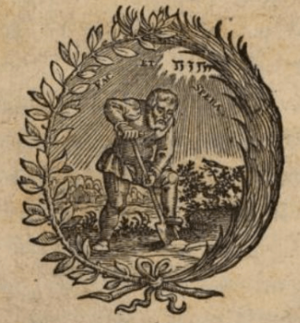Martin van den Hove facts for kids
Martin (Maarten) van den Hove (also known as Martinus Hortensius) was a smart Dutch astronomer and mathematician. He was born in 1605. His Latin name, Hortensius, means "garden," just like his Dutch last name "Hove." He made important discoveries about planets and stars.
Contents
Early Life and Studies
Martin was born in Delft, a city in the Netherlands. He went to Leiden University from 1625 to 1627. There, he learned from famous teachers like Willebrord Snellius and Isaac Beeckman. He continued his studies with Snellius until 1630.
Working with Philippe van Lansberge
In 1628, Martin started studying with Philippe van Lansberge. Lansberge was an older astronomer who wanted to "restore astronomy." This meant he wanted to make new, accurate observations of the sky. Martin became a big fan of Lansberge and helped him a lot. Lansberge was very thankful for Martin's help. He said it was like when the famous Rheticus helped the great Copernicus.
In 1630, Martin wrote the introduction for a book by Lansberge. This book talked about how the Earth moves around the Sun, following Copernicus's ideas. In his introduction, Martin disagreed with some of the ideas of another famous astronomer, Tycho Brahe. Martin believed Lansberge was the one truly improving astronomy. He felt that Tycho Brahe and others didn't value old observations enough.
Teaching and Research
In 1634, Martin began teaching math and science in Amsterdam. He gave a speech about how important and useful math is. This place where he taught is now known as the University of Amsterdam.
Martin also taught about optics (how light works) in 1635. Later, in 1637, he taught about navigation (how to guide ships). In 1638, he even worked with Galileo Galilei. They were trying to figure out a way to find a ship's longitude (its east-west position) using the moons of Jupiter.
Important Discoveries and Legacy
Martin developed a new way to measure the size of planets. He used his telescope to measure how big they looked in the sky. His measurements were probably the first new ones in about 1700 years!
He also wrote letters to many other famous scientists of his time. These included René Descartes, Marin Mersenne, Pierre Gassendi, Christiaan Huygens, and Galileo Galilei.
In 1635, he became a full professor of the Copernican theory. This was a big deal because it meant teaching that the Earth goes around the Sun. He was going to become a professor at Leiden University in 1639, but he sadly passed away shortly after.
Today, there is a crater on the Moon named Hortensius in his honor.


